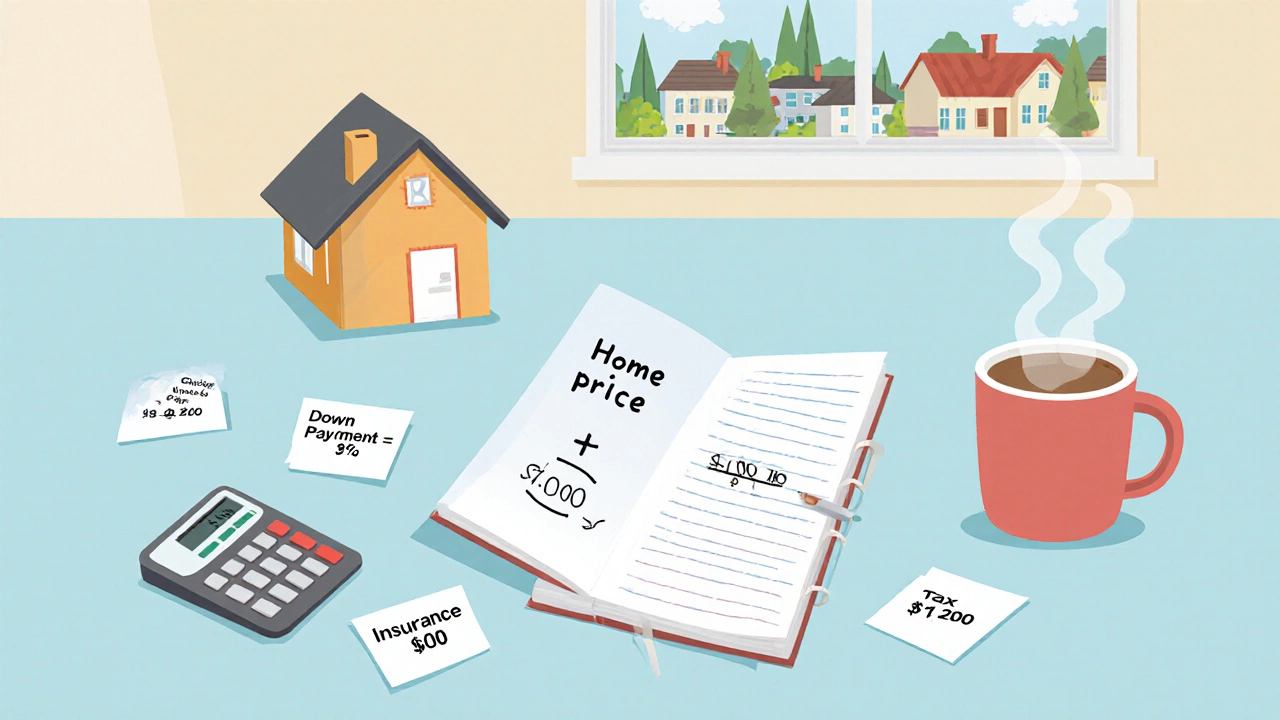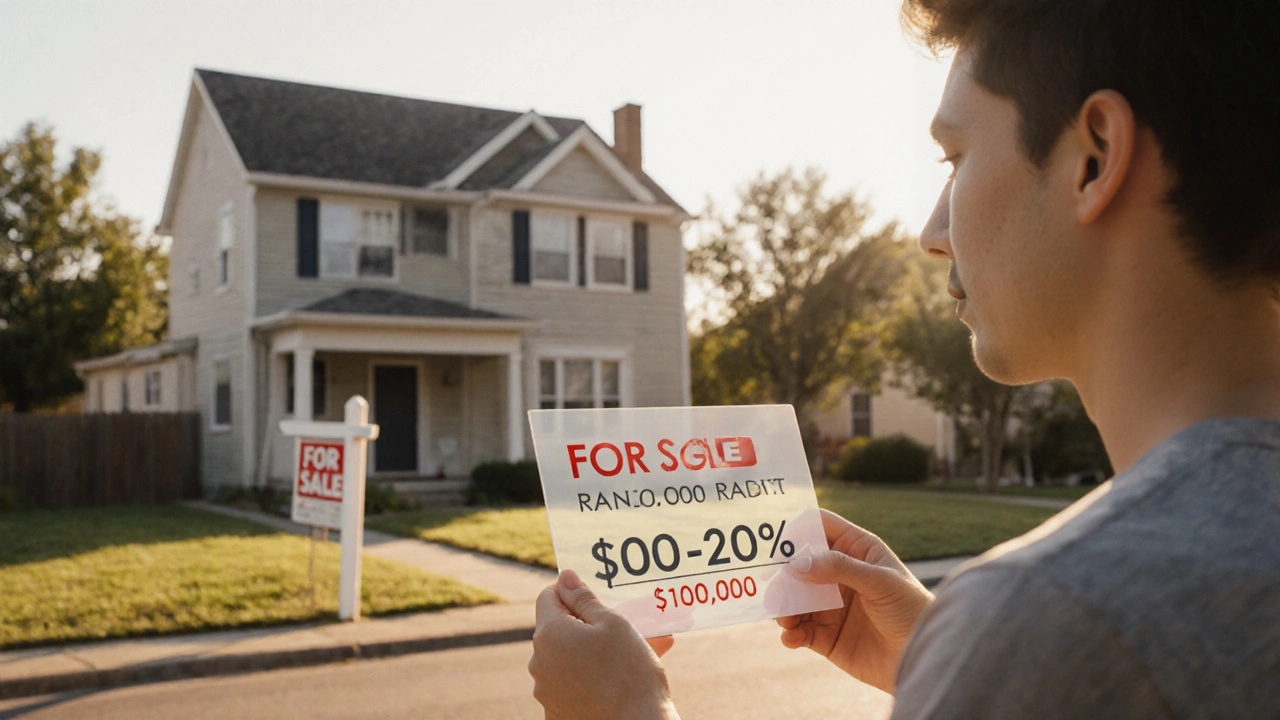Down Payment Calculator for $100,000 Home
Calculate Your Home Purchase Costs
Determine your down payment and total cash requirements for a $100,000 home purchase based on your loan type and down payment percentage.
Your Inputs
Key Information
Important Notes
Down payments under 20% typically require PMI (Private Mortgage Insurance). Closing costs usually range from 2-5% of the purchase price.
Government Programs
VA loans may qualify for 0% down payment. FHA loans require 3.5% down payment with PMI.
Your Estimated Costs
Enter your down payment percentage and loan type to see your results.
Key Takeaways
- Typical down payments range from 5% to 20% of the purchase price.
- For a $100,000 home, expect to need $5,000 - $20,000 for the down payment alone.
- Closing costs, insurance, and taxes add another 2%-5% of the price.
- Credit score, loan type, and LTV ratio directly affect how low you can go.
- Saving strategies and government schemes can shave off thousands.
When you hear “down payment,” you probably picture a big, scary lump sum you need to cough up before you even get the keys. The reality is a bit more nuanced, especially if you’re eyeing a $100,000 property as a first‑time buyer. Below you’ll find a step‑by‑step walk‑through that demystifies the numbers, shows where you can save, and helps you map out a realistic budget.
Down payment is the portion of the home’s price you pay upfront, reducing the amount you’ll borrow from the lender.
What Exactly Is a Down Payment?
Down payment is the cash you put toward the purchase price of a home at closing. Lenders use it to gauge your risk exposure: the larger the down payment, the lower the loan‑to‑value (LTV) ratio, and the safer the loan appears. In plain language, it’s the money that shows the bank you’re financially invested in the property.
Typical Down‑Payment Percentages
Different loan programs have different minimums. Here’s a quick snapshot:
| Loan type | Minimum % | Cash needed |
|---|---|---|
| Conventional (no PMI) | 20% | $20,000 |
| Conventional with PMI | 5% | $5,000 |
| FHA (United States example) | 3.5% | $3,500 |
| VA (eligible veterans) | 0% | $0 |
Even though the table lists U.S. loan types, the principle holds worldwide: lower‑percentage loans usually require private mortgage insurance (PMI) or other guarantees, which raise your monthly cost.
How Much Cash Do You Actually Need?
Let’s break down the numbers for a $100,000 home in a typical market like Auckland (or a comparable midsized city). The calculation starts with the down payment, then adds the inevitable extra fees.
- Down payment: Choose a percentage based on your loan eligibility. For illustration, we’ll use 10% ($10,000).
- Closing costs: Generally 2%-5% of the price. Assuming 3%, that’s $3,000.
- Legal fees, title search, and registration.
- Appraisal and inspection fees.
- Home‑insurance premium (first year): Roughly $800 for a modest property.
- Property tax (first year): If the local rate is 1.2%, that’s $1,200.
Adding everything together, you’re looking at $10,000 + $3,000 + $800 + $1,200 = $15,000 in cash at the start.

Factors That Can Shift the Required Down Payment
Every buyer’s situation is unique. Below are the main levers that can raise or lower the amount you need to save.
- Credit score measures how reliable you are to lenders. A score above 750 often qualifies you for lower‑percentage loans.
- Loan‑to‑value (LTV) ratio is the loan amount divided by the home’s price. A lower LTV means a smaller loan and, usually, a bigger down payment.
- Government assistance programs: In New Zealand, the KiwiBuild scheme can provide a 5% contribution for eligible first‑time buyers.
- Mortgage type: Fixed‑rate mortgages often require higher down payments than adjustable‑rate or interest‑only loans.
- Debt‑to‑income (DTI) ratio: Lenders cap the percentage of your monthly income that can go to debt. A high DTI can force a larger down payment to offset risk.
Calculating Your Own Down‑Payment Target
Use this simple formula to see what you need based on your preferred loan type:
Down‑payment amount = Home price × Desired down‑payment %
For a $100,000 home and an 8% target:
100,000 × 0.08 = $8,000
Next, add estimated closing costs (use 3% as a mid‑range figure):
100,000 × 0.03 = $3,000
Finally, budget for insurance and taxes (≈2% total):
100,000 × 0.02 = $2,000
Grand total ≈ $13,000.
Saving Strategies for First‑Time Buyers
- Automate a dedicated savings account: Set up a direct‑deposit of 10% of each paycheck.
- Cut discretionary spend: Track daily coffee runs; those $5 purchases add up to $260 a year.
- Tap into superannuation or retirement savings only if you understand the tax implications.
- Take advantage of employer‑matched home‑buyer bonuses where available.
- Consider a joint purchase with a trusted family member to pool down‑payment resources.

Common Pitfalls to Avoid
It’s easy to underestimate the cash you’ll need. Here’s what trips up many newbies:
- Assuming the down payment is the only upfront cost.
- Overlooking PMI premiums that can add $50‑$150 to each monthly payment.
- Buying a home that pushes your DTI over the lender’s limit, forcing a larger down payment.
- Relying on a single savings goal without a backup plan for unexpected expenses.
Quick Checklist Before You Apply
- Determine the down‑payment % you can comfortably afford.
- Calculate total cash needed (down payment + closing costs + reserves).
- Check your credit score; aim for 720+ for best rates.
- Gather documents: pay stubs, tax returns, bank statements.
- Explore local assistance programs (e.g., KiwiBuild, First‑Home Grant).
Frequently Asked Questions
Can I buy a $100,000 house with zero down payment?
Zero‑down options exist, mainly for veterans (VA loans) or via special government schemes. For most civilian buyers, a minimum of 3%‑5% is required, plus closing costs.
How does private mortgage insurance (PMI) affect my monthly payment?
PMI typically costs 0.3%‑1.0% of the original loan amount per year. On a $95,000 loan (95% LTV), a 0.5% PMI adds about $475 annually, or roughly $40 per month.
What’s a realistic timeline to save a $10,000 down payment?
If you can set aside $800 each month, you’ll reach $10,000 in just over a year. Adjust the timeline by changing the monthly savings amount.
Do I need a separate emergency fund after I buy?
Yes. Lenders often require two to three months of mortgage payments in reserve. It helps cover repairs, vacancies, or income fluctuations.
Are closing costs the same as the down payment?
No. Closing costs are separate fees that cover legal work, title registration, inspections, and taxes. They usually run 2%‑5% of the purchase price, on top of the down payment.
By understanding each component, you can set a realistic savings goal, pick the right loan, and move forward with confidence. The $100,000 price tag isn’t a mystery-just a collection of numbers you can plan for.


Corbin Fairweather
I am an expert in real estate focusing on property sales and rentals. I enjoy writing about the latest trends in the real estate market and sharing insights on how to make successful property investments. My passion lies in helping clients find their dream homes and navigating the complexities of real estate transactions. In my free time, I enjoy hiking and capturing the beauty of landscapes through photography.
view all postsWrite a comment